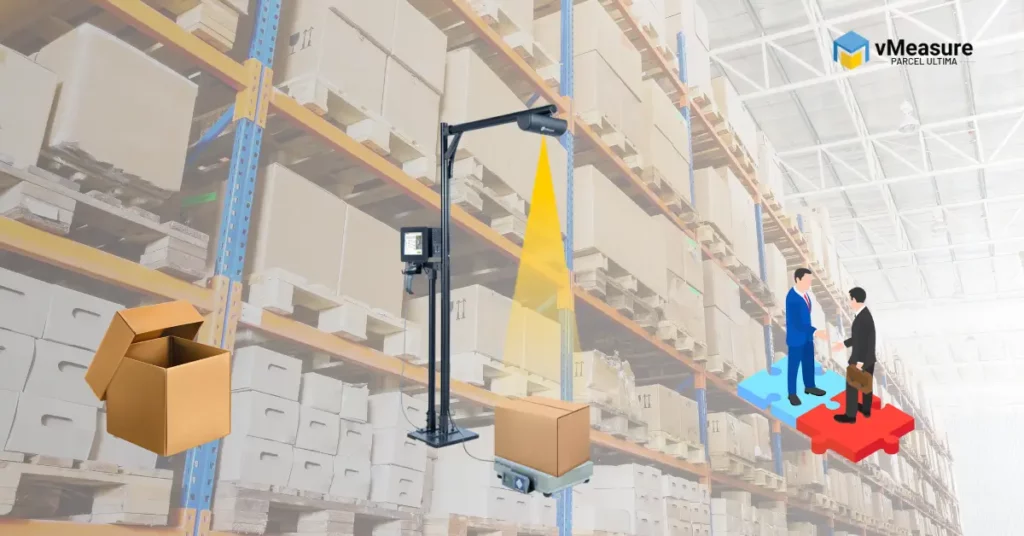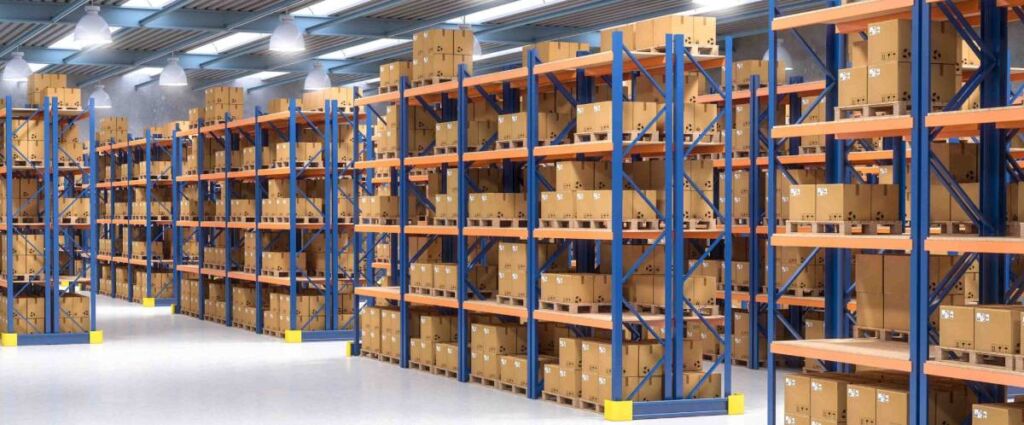Table of Contents
Introduction
Step into the dynamic world of logistics, where businesses grapple with a crucial decision: choosing the ideal shipping method. Explore two game-changers – Less Than Truckload (LTL) and Parcel Hundredweight. LTL optimizes space and costs for smaller shipments, while Parcel Hundredweight, exemplified by carriers like UPS, handles non-palletized, multi-package shipments.
This article provides businesses with valuable information about LTL and Parcel Hundredweight, helping them make well-informed decisions that suit their specific needs. Are you ready to enhance your shipping strategy? Let’s get started!
Parcel Hundredweight and Multiweight Programs
In the realm of shipping solutions, Parcel Hundredweight (UPS) and Multiweight (FedEx) Programs emerge as strategic choices for businesses grappling with the logistics of non-standard shipments.
Parcel Hundredweight (UPS)
Definition and Features:
Parcel Hundredweight by United Parcel Service (UPS) is a specialized program crafted to handle shipments exceeding traditional parcel weight limits, offering tailored solutions for non-palletized, multi-package shipments.
Non-palletized, Multi-package Shipments:
Parcel Hundredweight stands out for its flexibility, eliminating the requirement for additional palletization efforts, making it an ideal choice for businesses handling a higher volume of smaller packages and streamlining the shipping process.
Cost Advantages for All 50 States and Puerto Rico:
Parcel Hundredweight offers significant cost-effectiveness, reaching across all 50 states and Puerto Rico. This makes it a practical choice for businesses with a broad customer base, providing financial benefits regardless of geographic location.
Multiweight (FedEx)
Similar Program to Parcel Hundredweight:
- FedEx’s Multiweight program mirrors the concept of Parcel Hundredweight, addressing multi-package shipments surpassing standard weight limits. It serves as an alternative solution for businesses seeking flexibility in their shipping strategies.
Shipping Multi-package Shipments Weighing 200 Pounds or More:
- Multiweight stands out with a focus on shipments weighing 200 pounds or more, providing tailored, reliable shipping solutions for businesses managing bulkier items.
Nationwide Coverage:
- Like Parcel Hundredweight, Multiweight ensures nationwide coverage, offering businesses a reliable shipping partner throughout the country. This extensive coverage is vital for businesses with a wide customer reach, enhancing the accessibility and reliability of their shipping operations.
Both Parcel Hundredweight and Multiweight Programs offer smart solutions for non-standard shipments. Parcel Hundredweight by UPS is great for smaller, non-palletized packages, saving costs nationwide. FedEx’s Multiweight is perfect for businesses dealing with bulkier items, ensuring reliable shipping across the nation. The best choice depends on your business needs, stressing the importance of picking the right program for you.
Comparison with LTL Shipping
In evaluating the landscape of shipping solutions, it becomes essential to consider alternatives to the traditional Less Than Truckload (LTL) shipping, especially for businesses holding FedEx or UPS accounts.
A. Alternatives to LTL for Shippers with FedEx or UPS Accounts
Convenience for Existing Account Holders:
- One notable advantage for businesses with established FedEx or UPS accounts is the convenience of leveraging these accounts for alternative shipping methods, streamlining processes, and reducing administrative hurdles through the utilization of existing relationships.
Streamlined Logistics for Parcel Shipments:
- For shippers managing a higher volume of smaller, non-palletized packages, alternatives like Parcel Hundredweight and Multiweight Programs provide a streamlined and tailored solution to meet specific business needs.
B. Recognition That They May Not Always Be the Best Option:
Acknowledgment of Limitations:
- Despite the benefits of alternatives to LTL, it’s important to acknowledge that they may not universally surpass traditional LTL shipping; LTL, with its own merits, particularly suits businesses managing larger, bulkier shipments that may not align with parcel services.
Evaluation of Individual Business Needs:
- The decision between alternatives and LTL hinges on the unique needs and characteristics of each business, recognizing the variability in shipment sizes and frequencies as essential for making a well-informed decision.
Consideration of Comprehensive Logistics:
- LTL shipping, with its comprehensive approach to logistics, remains the superior choice for businesses, catering to a broader spectrum of shipping needs, especially for those managing larger, palletized shipments.
Basically, when FedEx or UPS account holders investigate alternatives to LTL, they need to balance convenience and streamlined processes. It’s important to recognize that these alternatives may not always be better than traditional LTL shipping. The key is to carefully evaluate individual business needs to make sure they align seamlessly with the shipments on hand.
Factors Influencing Choice: Pricing
Understanding pricing dynamics is crucial for businesses as it directly influences budget considerations and overall profitability.
A. Significance of Pricing for Most Businesses:
- Pricing plays a central role, impacting the financial health of businesses.
- It is a critical factor influencing decision-making processes and overall cost-effectiveness.
B. General Pricing Trends for LTL and Parcel Services:
- LTL and Parcel services have distinct pricing structures tailored to different shipping needs.
- LTL often employs a weight-based model, while Parcel services, like Parcel Hundredweight, offer flexibility with potential cost advantages.
C. Decision-Making Based on Distance and Weight:
- Consideration of shipment distance and weight is vital for informed decision-making.
- Parcel services may be more cost-effective for shorter distances, while LTL’s consolidated approach is advantageous for heavier shipments or longer distances.
In summary, pricing is a critical determinant, and businesses must align their shipping strategies with the specific needs of their shipments, optimizing cost-effectiveness based on distance, weight, and service flexibility.
Pricing Calculations and Additional Costs
Determining shipping cost can get tricky, especially when dealing with packages in the “gray area” – that in-between zone where regular parcel or LTL services don’t have a clear answer.
A. Figuring Out Costs in the “Gray Area”:
- Shipping in the “gray area” poses challenges as factors like weight, size, and distance constantly fluctuate, making it difficult to determine the most cost-effective method. To navigate this, businesses require customized solutions, involving careful number crunching for precise decision-making.
B. Why Getting Quotes is a Must:
- Ensuring accuracy is key in the complex shipping landscape. Obtaining quotes from both LTL and Parcel services is crucial, enabling businesses to make informed and smart decisions based on precise cost estimates.
C. Watching Out for Extra Costs:
- In shipping, it’s important to think about more than just the basic cost. Businesses need to account for extra charges, like those for special services (e.g., delivering to a residence). Also, handling packaging costs carefully is crucial to keep overall expenses in check.
In essence, navigating the shipping “gray area” involves getting quotes for informed decisions. Considering extra costs provides a clear picture for savvy choices that balance cost and service quality for a smooth shipping experience.
Other Considerations
Beyond Parcel Hundredweight and Multiweight Programs, it’s essential to weigh the distinct benefits of LTL shipping and these specialized services.
LTL Shipping
Less Handling, Less Risk:
- LTL minimizes handling, reducing the damage risk, and ensures a smoother journey from point A to B with fewer touchpoints.
Size Flexibility:
- LTL adjusts to different package sizes and shapes, making it suitable for various product types without being limited by standardized packaging rules.
Efficiency for Larger Shipments:
- Efficient for businesses managing bulkier items or larger quantities, consolidation in LTL optimizes space and resources, leading to cost savings.
Synchronized Arrival:
- In LTL, having all packages arrive together ensures a smooth and efficient delivery process, making customers happy with synchronized deliveries.
Parcel Hundredweight and Multiweight Services
Reliable Transit Times:
- Consistent transit times not only ensure predictability in shipping schedules but also prove valuable for meeting customer expectations.
No Extra Charges, No Complexity:
- Both Services feature no extra charges for residential or inside delivery, ensuring cost transparency and eliminating the need for complex freight classifications, simplifying logistics.
Flexibility and Transparency:
- Both Services allow spontaneous shipments without scheduled pickups and provide real-time visibility through advanced tracking systems, enhancing communication.
Affordability for Small Shippers:
- Parcel Hundredweight and Multiweight Services are cost-effective for small shippers without requiring LTL discounts, benefiting smaller businesses.
In short, LTL is great for big shipments, Parcel Hundredweight and Multiweight Services are reliable, transparent, flexible, and affordable for businesses of any size. Choose based on your specific business needs.
Choosing the Right Service
Besides Parcel Hundredweight and Multiweight Programs, let’s look at the perks of regular LTL shipping and these special services.
LTL Shipping
Parcel Hundredweight and Multiweight Services:
- Always On Time: These services adhere to a schedule, ensuring you know exactly when your package will arrive and eliminating any guessing games with delivery times.
- No Extra Costs, No Headaches: There are no surprise charges for doorstep delivery; it’s all upfront, and they keep it simple, eliminating the need to figure out complicated shipping categories.
- Pickup Whenever: No need to book a pickup time – just send your stuff whenever you’re ready, keeping things flexible to fit your business flow.
- See It All, anytime: Get real-time updates on where your package is, eliminating any uncertainty so that you’ll always know where your stuff is.
- Budget-Friendly for Small Folks: Whether you’re a small business or a larger enterprise, these services are budget-friendly, offering a fair deal for everyone without the need for special discounts.
LTL is ideal for large or uniquely shaped items, while Parcel Hundredweight and Multiweight Services provide reliable, transparent, flexible, and budget-friendly options for businesses of any size. The decision is based on your business requirements.
Frequently Asked Questions
How to dispute a reclassification?
Reclassification of the freight happens when the LTL carrier finds a discrepancy between the freight class on the bill of lading and the actual freight class. To dispute a reclassification
- Keep the required documents like bill of lading, shipment details, original classifications, etc.
- Review the NMFC guidelines to ensure that your shipments have been correctly classified.
- Pay attention to the reason for reclassification. Often reclassification happens when there is a discrepancy between the item shipped and the initial information provided. Make sure to provide the updated information.
- Discuss and seek help regarding reclassification from your carrier or freight broker.
How does a change in freight class impact the shipping cost?
Consider you have a shipment of durable, car accessories and you have classified the shipment as class 65. However, after revaluation, you figured it out that these parts can be classified as under class 60 because they are denser and stowable.
- As you move the freight class from 65 to 60, your shipping cost decreases as lower-class shipments are generally less expensive.
- The reduction in freight class means you’ll pay a lower rate for the same weight, leading to cost savings.
Are freight classes universal?
Freight classes are not universal; rather, they are specific to the National Motor Freight Classification (NMFC) system used in the United States for less-than-truckload (LTL) shipments. However, there are a few exceptions.
1. Some carriers may have their own proprietary freight classification system.
2. Some carriers may offer different freight class discounts based on their shipments like high volume or certain types of commodities.
Which freight class is the cheapest and why?
Freight class 50 is the cheapest because commodities that are assigned to freight class 50 are high in density, have a low value, and have less risk in handling. As a result, carriers can ship these commodities more efficiently and at a lower cost.
What is freight class 60?
Freight class 60 is a relatively low freight class that weighs between 30 to 35 lbs per cubic foot. The goods in this classification are not extremely heavy, but they are denser than those classified under lower classes. Freight class 60 items may have moderate stowability requirements and handling characteristics. They predominantly contain car accessories, car parts, etc.
Conclusion
In conclusion, businesses face a crucial choice between LTL shipping and specialized services like Parcel Hundredweight and Multiweight Programs. The decision should be tailored to specific needs, considering pricing dynamics and benefits. Parcel services offer reliability, cost transparency, flexibility, and budget-friendliness, while LTL remains suitable for larger items. The key is a strategic, informed approach for an optimized shipping experience.
For more content like this join our newsletter!




